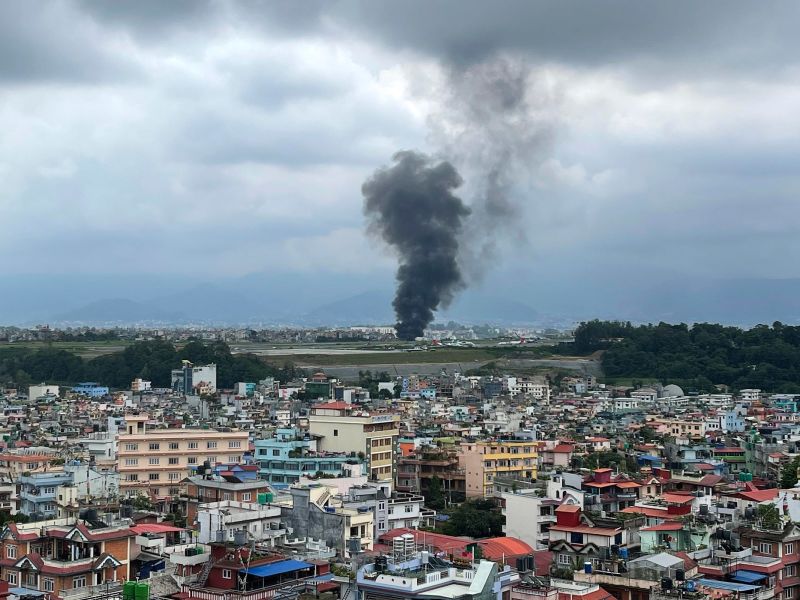The relatively small nation of Nepal, located amidst the Himalayas, is known for its stunning mountaintop vistas, ancient cultures, and thriving tourism industry. Yet, aviation safety in this mountainous region is a pressing concern after a tragic plane crash killed at least 18 people during takeoff.
According to local authorities, the aircraft accident occurred just as the plane was attempting to gain elevation from a regional airport. Witnesses reported seeing the plane stumble during takeoff, leading to a catastrophic crash and subsequent fire. Unfortunately, crash incidents during takeoff are not uncommon in Nepal, as the country’s rugged topography and unpredictable weather present unique challenges for pilots and aviation authorities alike.
Nestled between China and India, Nepal possesses extreme topographical variations, ranging from the vast plains of the Terai in the South to formidable mountain ranges in the North. This geography creates different microclimates within a small geographical area and often results in sudden, unexpected changes in weather condition, which can be perilous for aviation.
Another significant factor contributing to the extensive loss in plane crashes during takeoff is the physical layout of Nepal’s airports. Many of Nepal’s airstrips are nestled within mountain valleys and are shorter than average, requiring pilots to execute steep takeoff angles. The airstrip where this recent tragedy occurred, for example, ends abruptly at a mountainside, leaving little room for error during takeoff.
The human factor is another inevitable aspect that deserves examination. Pilots operating in Nepal must navigate some of the most challenging flying conditions globally while managing an aircraft. Stress, fatigue, and lack of adequate training or experience could all contribute to preferment failures, and maybe the unseen reasons behind these disastrous incidents.
This recent incident reignites the conversation regarding aviation safety standards in this Himalayan nation, especially concerning foreign tour operators. Notably, Nepal’s aviation sector has been under scrutiny more than once by international aviation safety organizations in recent years due to repeated aircraft accidents. International bodies have repeatedly called for a more rigorous adaptation of global aviation safety standards, demanding better training for pilots, more rigorous maintenance routines, and improvements in airport infrastructure.
The recent plane crash adds to a litany of previous flight-related incidents in Nepal, further illuminating the systemic chinks in Nepal’s aviation armor. Even though Nepal has made strides in adopting better safety policies in recent times, the recurrent accidents suggest a need for more reforms.
In the face of these challenges, Nepal’s government and the local aviation industry must undertake several steps to ensure safer skies for residents and visitors alike. Strengthening the country’s air traffic control system, enhancing pilot training programs, and investing in infrastructure upgrades could mitigate some of the risks inherent in Nepal’s aviation operations.
In conclusion, while aviation safety poses unique challenges in Nepal due to a combination of unforeseen weather conditions and complex topography, it is essential that ongoing negligence cannot be an excuse for incessant tragedies. It is imperative that authorities continue to take proactive measures to improve aviation safety, to assure the safety of passengers and crew, ultimately preventing future catastrophes.




